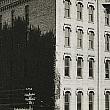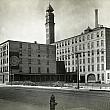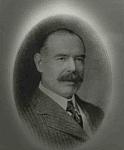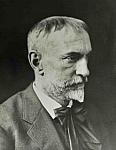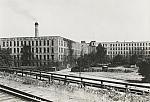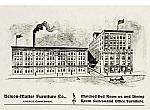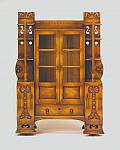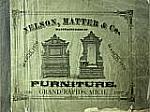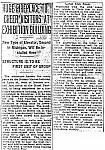Berkey and Gay Furniture Co. - Baxter, 1891
In 1859 Julius Berkey, with James Eggleston, in a small shop on Erie street, made sash, doors and blinds, under contract. Being a skillful mechanic, he also manufactured quartette stands, which sold readily. About this time William A. Berkey began the erection of a sash, door and blind factory on Mill Street, opposite Hastings, and in the summer of 1860 Alphonso Ham and Julius Berkey were using a portion of the second floor of that building for furniture making. In the following winter Berkey sold his interest to his partner, who soon closed it out.
In April 1861, Mr. Berkey started in again at the same place, and continued the business alone till November 1862; thus practically, though not foreseeing such an outcome perhaps, laying the foundation for that colossal institution, the Berkey & Gay Furniture Company's factory, which now stands among the leading furniture factories in the United States.
In November 1862, Elias Matter, inventorying his tool chest at six dollars, and Julius Berkey with five dollars in cash and a few hundred dollars worth of machinery and materials, formed the partnership of Berkey & Matter, who turned their attention to manufacturing exclusively for the wholesale trade of Chicago and Milwaukee. October 5, 1863, Wm. A. Berkey took a half interest with the young firm, and it was changed to Berkey Bros. & Company, with a capital stock of $17,215.33, including real estate and personal property, for the manufacture of sash, doors, blinds and furniture.
In 1866 George W. Gay purchased half the interest of Wm. A. Berkey and the firm name was again changed to Berkey Bros. & Gay. February 28, 1870, Mr. Matter retired. In January 1873, William A. Berkey withdrew. The Berkey & Gay Furniture Company proper was incorporated in August, 1873, with a capital stock of $500,000 and has been practically under the same management ever since its organization, the officers being: Julius Berkey, President; George W. Gay, Treasurer; John A. Covode, Secretary.
Their office and salesrooms are at 174 to 180 Canal, on the corner of Hastings Street. The factory proper in 1888 comprised three buildings; one 100 by 50 feet and four stories high; the other two three stories high, one 125 by 70 feet the other 8o by 40 feet, all containing the latest and most improved wood working machinery. The principal building, on the corner of Canal and Hastings, containing the offices, shipping departments, storing, finishing and show rooms, is a six-story brick block, 75 by 220 feet in size. The property of the company may be said to cover the greater portion of three blocks as platted, the lumberyard and dry kiln occupying one and the buildings the other two.
Every provision is made for the comfort and safety of employees. Heated by steam and carefully guarded from accident, the entire works may be regarded as a model for their uses. The output of the company is from six to eight hundred thousand dollars annually, sent to all parts of the world; though from the class of goods manufactured, consisting of fine furniture in chamber, dining-room, hall and library suits, they naturally seek only the cream of the trade. They have an eastern salesroom, at No. 17 Elizabeth street, New York City.
Four salaried and several commission men represent the company as salesmen; about 450 skilled workmen are kept constantly busy to satisfy the demand for their products; and to reward this force of labor some $20,000 is thrown into circulation each month. At this writing, 1889, the company are finishing a new factory building, largely on the site of the old, extending from Canal street across the canal, over Mill street, and to the river - in size 175 feet on Mill street, 195 feet on the river, 193 feet from front to rear, six stories high and basement, and containing nearly six acres of working space.
Probably there is no larger manufacturing establishment of the kind in the world.
Source: History of the City of Grand Rapids by Albert Baxter. 1891.

 facebook
facebook